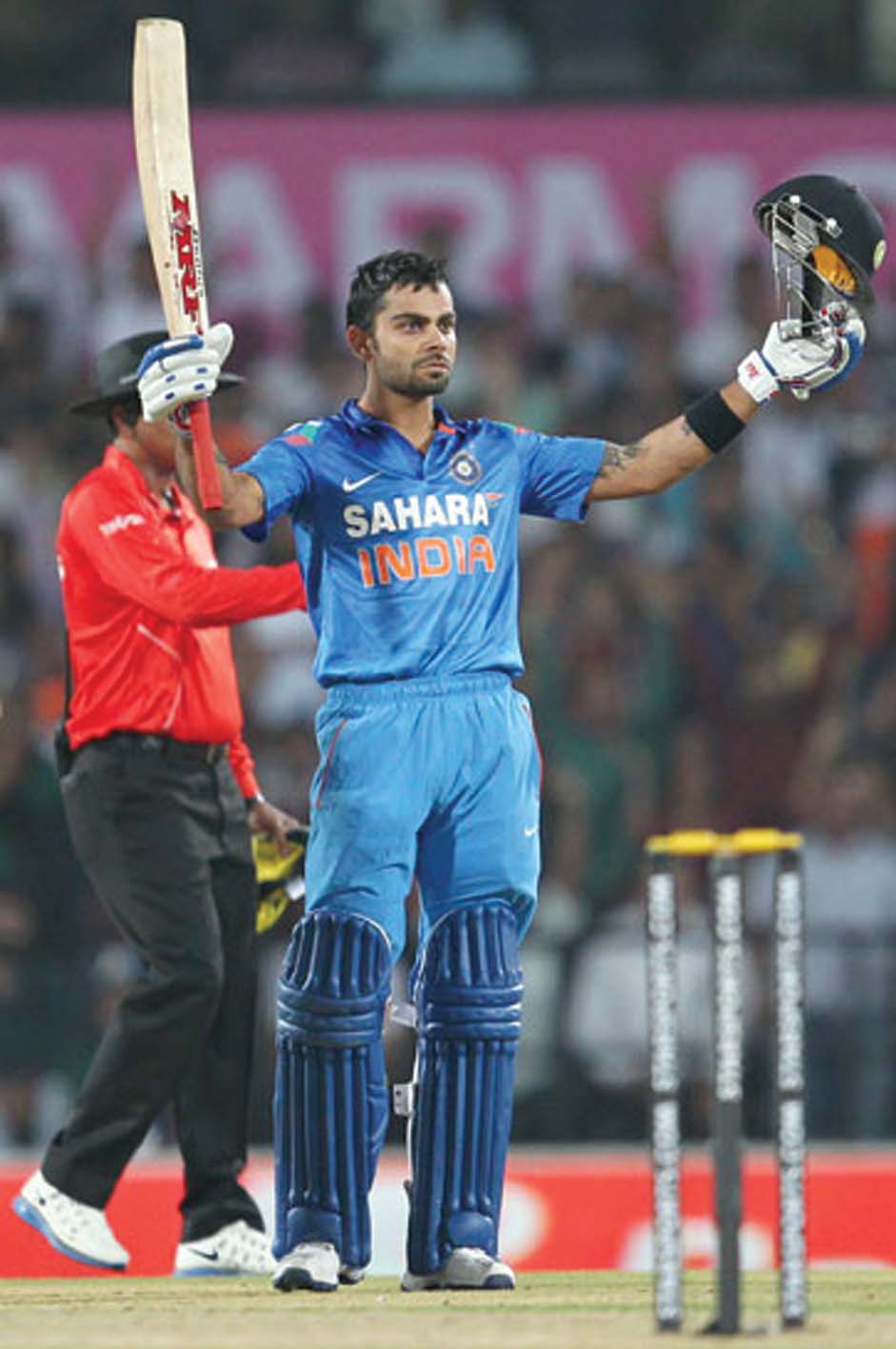
Push the boundaries, shift the goalposts, change vocabularies. Three hundred and fifty no longer inspires awe. Not when Indian batsmen are batting on flat Indian pitches surrounded by quick outfields with only four fielders outside the circle and two new balls to kill any chance of reverse swing. With Shikhar Dhawan’s assured century at the top, and Virat Kohli‘s 61-ball one at No. 3 – the thirdfastest by an Indian, challenging his own record of 52 balls – India became the first team to have chased down 350 or more twice, both of them in this series, and both without much frenzy.
The belief and the absolute absence of any slogging was remarkable once again, but India did face some nerves this time around. The match was doing a pretty fine job of retelling the Jaipur ODI story – Dhawan was dropped early, there was a big opening partnership, and Kohli was bursting through the target – when Dhawan played a rare low-percentage shot and exposed Suresh Raina and Yuvraj Singh.
Mitchell Johnson duly removed them, and 62 off 48 required became 35 off 18 at one point. Kohli, though, pulled out some of the most incredible shots of his innings, driving chest-high balls for fours wide of long-off, to take India through with three balls to spare. With this result the series remained alive, and George Bailey, who might have had reason to believe he had booked his Ashes spot with a 114-ball 156, will have to put in the drawer possible plans of going home early for Ashes preparation.
Alongside Bailey, adding 168 for the third wicket, was another Ashes candidate, Shane Watson, who scored a century. The two did seem to be struggling against spin, with Australia 89 for 2 after 22 overs, but Watson did enjoy some luck as Ravindra Jadeja overstepped when he edged a slogsweep to point. Once Bailey started taking on the spinners, the wheels came off, India began to bowl poorly, and a colossal 261 runs came in the last 28 overs. As the hitherto respectable figures of all the bowlers took a beating, Bailey reached a host of landmarks.
He beat the records for most runs in a bilateral series by an Australian or a captain, becoming the second-fastest man to 1,500 runs, and overtaking Misbah-ul-Haq as the leading run-getter this year. In the end, he was left with a rueful smile, half marvelling at the quality of the batting, half resigned to the playing conditions and the pitch and the outfield.
MS Dhoni, although he won, shared the views about the lopsided nature of the contest, but at one level you can’t take away from the composure Kohli, Dhawan and Rohit showed for a majority of the massive chase. It was as if they didn’t acknowledge the enormity of the task of maintaining a run rate of seven an over for 50 overs. There was no anxiety, no need to hit out, even if Rohit – for example – struggled to find the gaps early in the innings.
Glenn Maxwell, who later took a diving catch at point off a free hit, will rue dropping an easy offering from Dhawan when the batsman was 19 off 22. Crisp shots and lovely placement remained the feature of the rest of the 178-run partnership as Rohit made up for a slow start with two sixes off Glenn Maxwell in the 29th over. He picked out deep midwicket off a long hop, but that only hastened the chase with Kohli’s entry. From the moment Kohli drove the fifth ball he faced for four through extra cover, he knew he was good for an encore of Jaipur.
A few blinks later, the partnership for the second wicket was worth 50 runs, out of which Dhawan had scored just nine runs. Kohli was 40 off 26 then. Dhawan, who was cramping by the time he reached his hundred, walked across next ball, and was bowled, giving Australia an opening. Before Australia could enter that opening, though, Kohli brought up his fifth consecutive score of fifty or more. He would soon make it a third consecutive year with 1000 runs or more. There would be a hiccup before the win, though.
Johnson, who had been kept back for the middler order, was brought back on, and he accounted for Raina and Yuvraj in the same over. Out came Dhoni, and India suddenly slowed down. James Faulkner and Johnson both began to get the ball to move away from the right-hand batsmen, and slowly the asking rate began to climb. Dhoni told Kohli to wait for Johnson to finish off, and that the big over can come in the last four. Johnson finished off with three overs to go and 35 to get.
Kohli had seen enough. His proximity to the hundred – his 11th in 64 chases, behind only Sachin Tendulkar’s 17 in 242 attempts – didn’t matter. He would charge down the wicket, the bowler would drop short, and he would still manage to drive him to wide long-off. When Australia plugged that gap, he began going wide long-on with similar success. Eventually the asking rate came down to a run a ball in the last over, and India were through with three balls to spare.




Be the first to comment